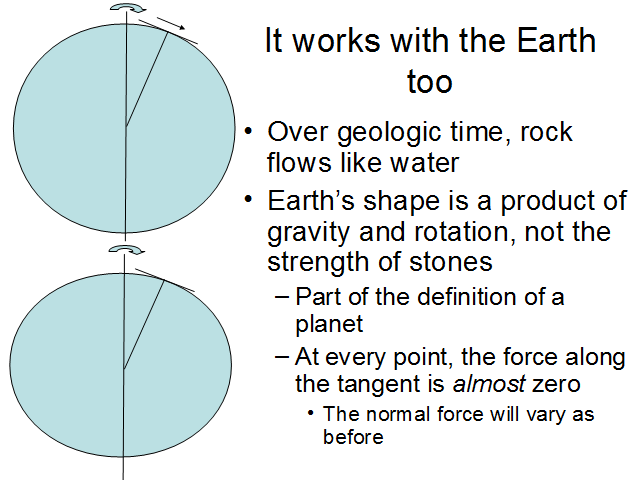
NOTES
The overall shape of the Earth depends on the interplay between gravity and centrifugal force - the top figure shows a rotating spherical Earth. If you calculate the force along the tangent line at any point, you’ll find a net force towards the equator - so a loose object placed there will move towards the equator. In the long term, every object on Earth is loose - stone is just not strong enough to resist the continual force reshaping it. In the steady state the shape of the earth distorts just enough to eliminate the force along the tangent to the surface at every point; the normal force will vary from point to point, with a maximum at the pole and a minimum at the equator, but because the tangential force is everywhere zero, there is no further tendency for the shape of the planet to change.
The International Astronomical Union's definition of a planet (the same definition that excludes Pluto) includes hydrostatic equilibrium as part of the definition. If an object is not massive enough for its gravity and rotation to reshape it (overwhelming the strength of its materials), it's not a planet.
Now we can think about the question that inspired this question.
